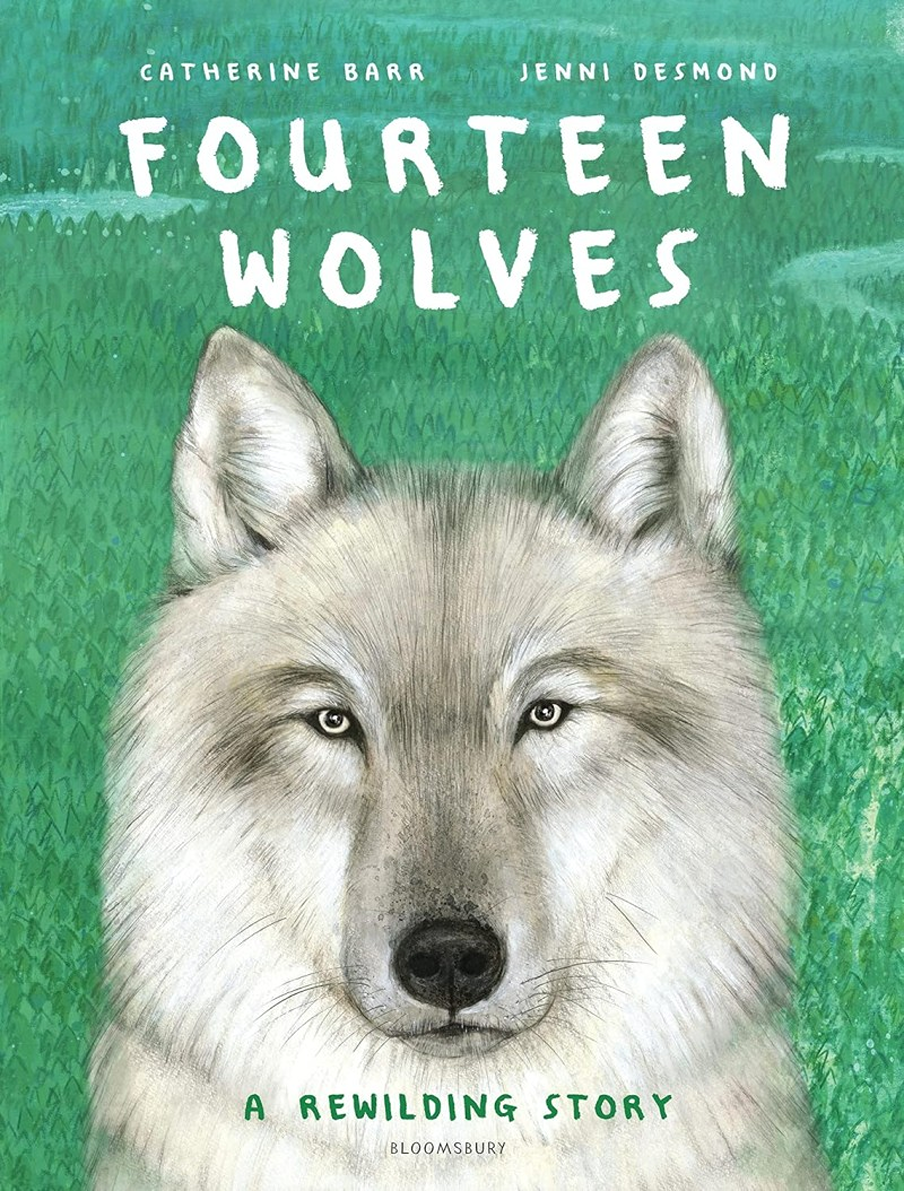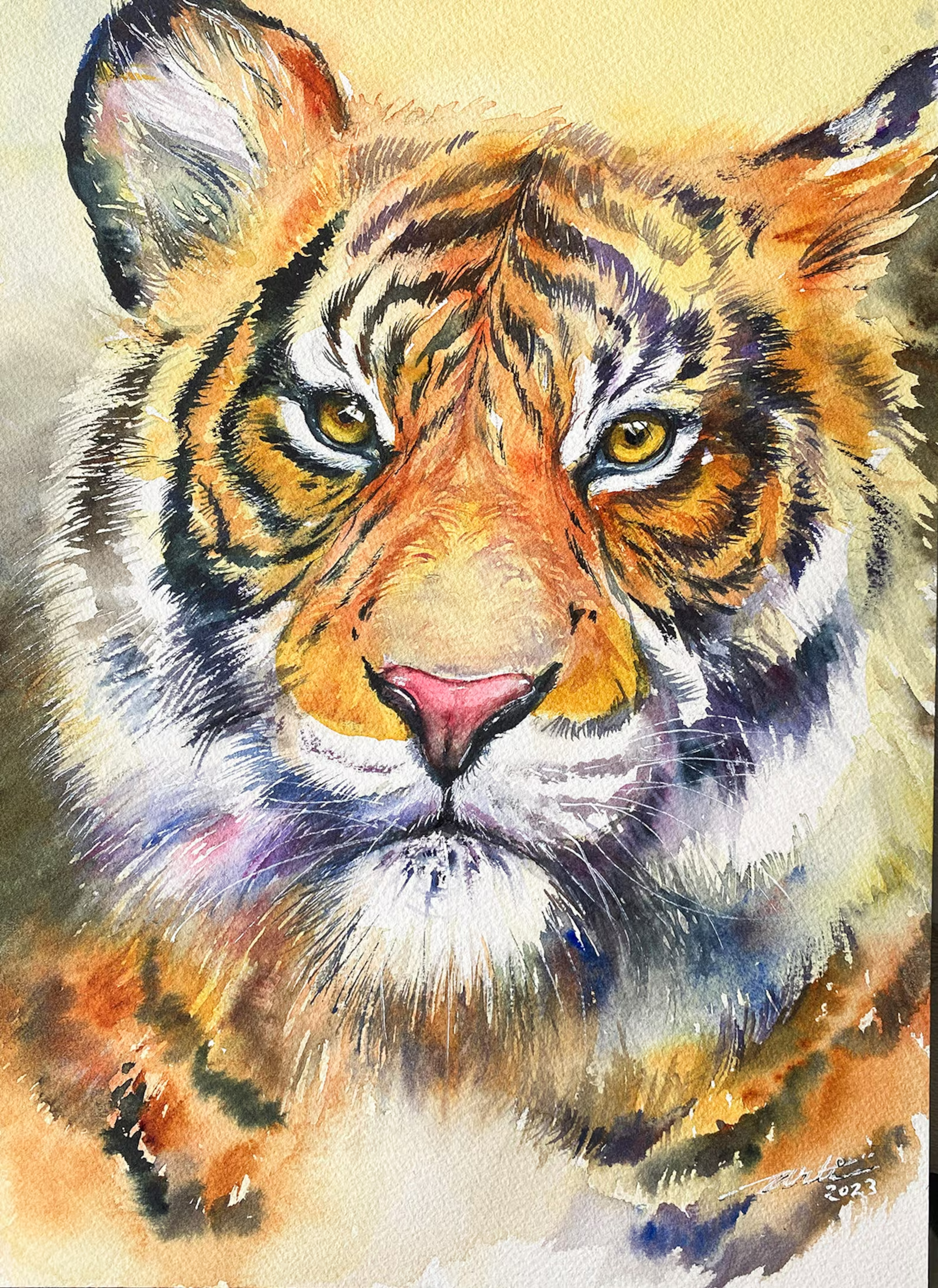
Even if wolves don’t live near you, as John Muir once wrote ‘when one tugs at a single thing in nature, he finds it attached to the rest of the world’. In other words, helping wild wolves in Canada, kangaroos in Australia and elephants in Africa, can only do good.
Fourteen Wolves is the true story of conservationists in the USA’s Yellowstone Park successfull rewilded wolves back into the area, due to the ecosystem collapsing when they disappeared, back in the 1930s. Herds of elk swarmed the plains, bears starved, rabbit families shrunk and birds flew to new homes. Plants vanished, trees withered and rivers meandered. When in 1995 wild wolves returned, everything began to change for the better. The book (for young readers) features beautiful illustrations by London artist Jenni Desmond.
Gray Wolf is a beautifully illustrated guide to these wild dogs of the wilderness, for young readers, to encourage them to protect all creatures worldwide. Gray wolves live in packs, but they are very different from dogs. Find out why wolves howl, why they sniff each other’s butts (their way of shaking hands!) and how some wolves in Yellowstone National Park (USA) use thermal activity to heat their den.
You’ll also learn of the incredible relationship that grey wolves have with ravens (they play tug with wolf cubs) and learn about rewilding , which has brought wolves back from the brink of extinction to healthy ecosystems for all (there are still campaigns in Canada to stop hunters shooting wolves from helicopters in the false belief that it will help caribou (a bit like the bad science here causing badger culls, when it’s farmer-to-farmer transmission mainly that causes cattle TB). Brenna Cassidy is a wildlife biology PhD candidate at University of Montana, who studies the survival and reproductive ecology of gray wolves.
Like dogs (they’re not related), wolves live around 14 years and mostly in packs. They do howl (but not at the moon, they’re just howling at each other to communicate). Very caring and playful, they are also wonderful parents.
So how can people everywhere help wild wolves? Like anything really. Just live simple sustainable lives, and avoid purchasing anything that would hinder their welfare (fur, dodgy souvenirs etc). Help to protect natural habitats by avoiding plastic, too much oil and timber or palm oil. And don’t visit zoos (wild wolves need a lot of land to roam in, and conservation of endangered species of best done in natural habitats, with experts monitoring progress, not zoo managers monitoring profits to take bored children to look at bored animals in cages).
lessons to learn from Yellowstone wolves
Thinking Like a Wolf is a book endorsed by Jane Goodall. This book by renowned wolf researcher Rick McIntyre follows all 8 major wolf personality, drawing on decades of field notes to uncover the challenges and triumphs of Yellowstone Park’s wolf packs from what the Washington Post calls ‘the chief historian of the most famous wolf population in the world’.
In this book, Rick explores the intricate world of wolf behaviour and highlights individual character traits that allow wolf packs to thrive. Unveiling power struggles, pack politics, the roles of family protection and inter-pack conflicts, he shares true stories to celebtrate the many lessons we can learn from wolf packs, and the dynamic personalities that enable them to expand across new territories, amid diversity.
Weaving an impressive web of politics and power, family cooperation and commitment, this book offers readers a unique windo into the fascinating inner workings of wolf packs. Rick has spent 40 years watching wild wolves in America’s national parks (28 of them in Yellowstone, where he has accumulated over 100,000 wolf sightings to educate the public about the park’s wolves). He is retirned from National Park Service and currently a faculty affiliate at University of Montana.
studying wolves in their wild habitat
A Woman Among Wolves is a memoir from one of the first women in the USA to study wild wolves in their natural habitat. A story of passion, resilience and determination, wildlife biologist Diane Boyd has been called ‘the Jane Goodall of wolves’ and has spent 40 years studying and advocating for wolves in the wilds of Montana (near Glacier National Park where she began work as the only female biologist in the US).
Living in an isolated cabin without running water or electricity, she faced down grizzly bears, mountain lions, wolverines (and the occasional trapper) as she tracked wolves making their way from Canada to Montana. In this captivating book, the author takes you on a wild ride from early days of wolf research to the present-day challenges across the globe. Diane holds a PhD in wildlife biology from University of Montana, and is author of many scientific papers on wolves.






